Books by Christian Lauwers
Couverture et première recension de mon roman "Le maître des rêves", aux éditions Murmures des so... more Couverture et première recension de mon roman "Le maître des rêves", aux éditions Murmures des soirs, avril 2024. Sigmund Holmes, détective, utilise ses facultés pour explorer l'inconscient et combattre un criminel génial. Le docteur Yungson, son ami et chroniqueur, découvre les méandres de l'inconscient collectif. L'enquête se déroule à Londres en 1898 et dans le monde des rêves.
Le Cabinet des médailles, 2020
Présentation d'un roman historique sur la numismatique, l'Histoire et l'archéologie. Disponible s... more Présentation d'un roman historique sur la numismatique, l'Histoire et l'archéologie. Disponible sur le site du CEDARC/Musée du Malgré-Tout.
Travaux du Cercle d'Etudes Numismatiques 21, 2020
Table of contents of the volume published by the Centre d'Etudes Numismatiques - European Center ... more Table of contents of the volume published by the Centre d'Etudes Numismatiques - European Center for Numismatic Studies (Brussels).
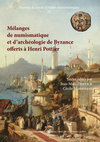
Henri Pottier a fêté son quatre-vingt-cinquième anniversaire le 4 novembre 2018. Jean-Marc Doyen ... more Henri Pottier a fêté son quatre-vingt-cinquième anniversaire le 4 novembre 2018. Jean-Marc Doyen et Cécile Morrisson ont, à cette occasion, réuni les contributions de vingt et un de ses amis et collègues. Les thèmes en sont variés, allant de l’ouverture de l’atelier monétaire de Byzance par Aurélien (J.-Cl. Thiry) au voyage à Constantinople du peintre anversois Jacob Jacobs (E. Warmenbol), en passant par les tissus byzantins conservés en Europe occidentale (R. de Mûelenaere), ou les origines du nom d’Istanbul (L. Severs). Mais ce sont bien entendu les VIe et VIIe s. qui se taillent la part du lion : jetons en plomb du VIe s. (J.-P.. Blicq), trésors de solidi de Gaza (B. Callegher), monnaies d’argent ostrogothiques en Gaule (J.-M. Doyen). Les périodes plus récentes ne sont certes pas oubliées, comme les imitations latines du XIIIe s. (C. Wolkow). Une place importante a été accordée aux cultures périphériques : monnayages arabo-byzantin (T. Goodwin), des Sassanides (Fr. Gurnet), des Arméniens et de l’Orient (M. Phillips), de Carthage (I. & W. Schulze). J. Elsen décrit le système pondéral égyptien. Plusieurs contributions traitent d’iconographie, comme les représentations de Constantinople à la fin du Moyen Âge (Ph. Pottier), les images de la Vierge sous Isaac II Ange (S. Mansfield) ou les influences byzantines chez les Seldjoukides et les Turcomans (R. Lemaire).
Les monnaies de fouilles ne sont pas oubliées : elles viennent d’Apamée de Syrie (Chr. Lauwers et R. Margos) ou de Sagalassos (F. Stroobants).
C. Morrisson et F. de Callataÿ insistent finalement sur le caractère novateur des travaux d’Henri Pottier et leur enseignement pour les recherches à venir.
"Mémoire de master inédit en Histoire de l'Art et archéologie, présenté en juin 2011 à l'Universi... more "Mémoire de master inédit en Histoire de l'Art et archéologie, présenté en juin 2011 à l'Université Libre de Bruxelles (ULB).
Unpublished masters' thesis in Art History and Archeology presented in June 2011 at the Université Libre de Bruxelles (ULB): "The importance of Syracuse in the sixth and fifth centuries BC gauged on the production and circulation of his coinage".
Papers by Christian Lauwers
The Journal of Archaeological Numismatics, 2020
In this article, the author presents a "treasure" that he assembled as a child. He makes an anamn... more In this article, the author presents a "treasure" that he assembled as a child. He makes an anamnesis of the sources of the coins gathered and the reasons for this accumulation. He finally poses the hypothesis that some ancient hoards were also the result of childish collections.
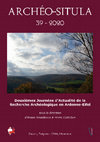
Archéo-Situla 39, 2020
The funeral site of the Tienne del Baticulle in Nismes (Viroinval - Namur) was discovered in 2012... more The funeral site of the Tienne del Baticulle in Nismes (Viroinval - Namur) was discovered in 2012 by a metal detectorist who unearthed a copper alloy basin, a bone comb and some fragments of human bones, and who directly informed the Cedarc/ Musée du Malgré-Tout. A first excavation campaign carried out in collaboration between the Cedarc and the Wallonia Heritage Agency (AWaP) revealed the existence of at least two late Roman inhumation graves. The first, slightly embedded in the schist, and to which the remains discovered by the detectorist belonged, contained a female subject along with fine funeral ware. The second grave, very damaged by farm work, nevertheless yielded vestiges from the same period and a few human bones. A second campaign, led by the Cedarc in 2014, uncovered two new graves, also cut into the schist. The first contained the remains of a young man surrounded by valuable items, including a belt decoration and several near-intact ceramics. The second one, also masculine, contained only one vase, likewise intact. The further development of the excavations in 2015 and 2016, spread over tens of square metres, did not reveal any new graves. The funerary items that were found, and particularly the belt decoration, that can be dated to the end of the 4th or beginning of the 5th century, bears a link with military service. Locally, this type of equipment is reminiscent of the nearby Mont Vireux (Ardennes - France) and, further away, of many sites in northern Gaul and on the frontiers along the Rhine and Danube.

Revue Belge de Numismatique, 2015
This article intends to appraise differences in monetization of urban and rural contexts in the C... more This article intends to appraise differences in monetization of urban and rural contexts in the Celtic world, on the basis of the distribution of the means of producing coinage. Various sets of archaeological evidence, amongst which eigthy-three monetary dies and twenty-eight punches, allow to identify about fifteen Celtic mints, mainly on oppida, but also in rural settlements, as well as some itinerant craftsmen. The case of the Vindelici, a federation of tribes in the south of Bavaria, where archaeological traces of five workshops were discovered, show the decentralization of monetary production, from the oppida to the countryside, but the lack of precision of the available chronology does not permit to date this decentralization more accurately than between the middle of the second and the middle of the first century BC, and thence to discover whether this decentralization was contemporary of the peak of the oppida or rather was a result of their decline starting in the years 80 BC.

Revue belge de Numismatique et de Sigillographie, CLIX, p. 151-186., Nov 29, 2013
Abstract – Belgian archaeologists have been excavating the Greco-Roman site of Apamea... more Abstract – Belgian archaeologists have been excavating the Greco-Roman site of Apamea on the Orontes since 1928. This article aims to publish 401 coins found during excavations between 2005 and 2010 and identified on the spot during the
summer 2010, that is to say the second largest sample of coins found in Apamea after the sample published by Jean-Pierre Callu in 1979. These coins are presented here in their archaeological context, a public building, the Tycheion, and the North-
East District, including a thermal establishment and a palaestra. Publishing those coins in their context should help precise the dating of some archaeological layers and, consequently, to specify periods of occupation of the buildings studied. The
issues raised by the presence of many backfills, halved and imitation coins are also discussed.
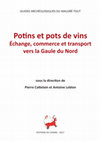
Potins et pots de vin. Echanges, commerce et transport vers la Gaule du Nord., 2017
Coins and commerce in Northern Gaul
(2nd century BC - 5th century AD)
What is known about the mo... more Coins and commerce in Northern Gaul
(2nd century BC - 5th century AD)
What is known about the monetary circulation and trade in Northern Gaul, from the period of Gallic Independence until the disappearance of the Roman Empire of the West? It appears that the use of coinage during trade, in commercial transactions, was a secondary function. Whether they were Gallic nobles or Roman emperors, usurpers or officials, the issuing
powers, that is to say the authorities who decided to strike and distribute currencies, were not
interested in trade and markets. They minted coinage only to pay their expenses. And these expenses
were always military first and foremost.The Gallic aristocrats sought to extend their power, and for this purpose they surrounded themselves with a numerous clientele of warriors and maintained alliances. It was for this purpose that they struck their heavy gold coins. The Roman emperors first struck money to pay for the legionaries, to build and maintain roads, harbours and fleets, enabling the legions to move rapidly from one border of the Empire to the other. But it was necessary that the recipients of the currencies could exchange it for the goods necessary for life: food, drinks, clothes, housing, heating... The circulation of coins could only lead to the monetisation of trade and, in the medium term, the establishment of structures allowing
such monetised exchanges, such as markets, and a division of labour between farmers, artisans and
merchants.
Travaux du Cercle d'études numismatiques, 2017
Thus far, no known hoard of Seleucid bronze coins was ever discovered in archaeological context. ... more Thus far, no known hoard of Seleucid bronze coins was ever discovered in archaeological context. Recorded in commerce, the hoard presented in this article is the 23rd Seleucid hoard with bronzes to enter the databases. The authors were able to examine it closely before and after cleaning of the coins. They took advantage of this rare opportunity to apply two new methods: determining the degree of wear of the coins, method tested by Jean-Marc Doyen for Roman bronzes, and comparing the hoard with the numismatic profile of various Seleucid archaeological sites established in the "Seleucid Excavations Database" (SED). This second method provided a likely origin for the constitution and the burial of the lot.
Bulletin du Cercle d'études numismatiques (BCEN) 52, 1, 2015
"À différentes périodes de l'Histoire, des populations considérées comme "barbares" par leurs voi... more "À différentes périodes de l'Histoire, des populations considérées comme "barbares" par leurs voisins plus avancés ont utilisé de la monnaie frappée. Les Celtes ont imité les monnaies de leurs voisins grecs et romains. Les Germains installés en Gaule ont imité la monnaie de l'Empire romain d'Orient. Ces populations se sont limitées, au début de leur utilisation de la monnaie, à un éventail de dénominations très étroit..."
Inventaire des coins, poinçons et ensembles d'outils destinés à la frappe des monnaies, connus po... more Inventaire des coins, poinçons et ensembles d'outils destinés à la frappe des monnaies, connus pour le monde celtique. Mise à jour de l'article paru dans la Revue Belge de Numismatique 161, 2015 (disponible sur demande).
Bulletin du Cercle d'études numismatiques, Vol. 50, n° 1, Jan-Apr 2013, p. 109-125
De Muntmeester, Jaargang 11, Nummer 3, Sep 2016
Une rare et belle imitation de silique au nom de l’empereur Honorius, frappée en Gaule, a été tr... more Une rare et belle imitation de silique au nom de l’empereur Honorius, frappée en Gaule, a été trouvée dans la bouche de l’occupante de la tombe 1, sur la nécropole du Ve siècle du Tienne del Baticulle, à Nismes.
On distingue généralement trois phases dans l'histoire des monnayages mérovingiens. Une phase pré... more On distingue généralement trois phases dans l'histoire des monnayages mérovingiens. Une phase préliminaire, le Ve siècle, a vu l'interruption de l'approvisionnement de la Gaule en monnaies de bronze romaines et les débuts des monnayages des peuples germaniques. L'identité des responsables de l'émission - les pouvoirs émetteurs - des monnaies mérovingiennes pose une série de problèmes que les chercheurs tentent de résoudre depuis le XIXe siècle. Nous donnons ici l'état de la question.
This paper deals with the study and contextualization of a unique hoard of Seleucid bronzes recor... more This paper deals with the study and contextualization of a unique hoard of Seleucid bronzes recorded in commerce in 2014. The authors propose an innovative methodological way to study the hoard and spot its burial point. The hoard includes 39 coins.
Partant des monnaies trouvées lors de fouilles archéologiques dans les provinces orientales de l'... more Partant des monnaies trouvées lors de fouilles archéologiques dans les provinces orientales de l'Empire romain, nous allons dans cet article parcourir tout le chemin menant à leur interprétation. Plus on avance dans l'identification, puis dans la mise en contexte des monnaies de fouille, plus on soulève de questions. Les monnaies elles-mêmes, leurs contextes et la mise en oeuvre de documents épigraphiques et littéraires permettent de répondre assez largement à ces questions.
Cet article vise à ajouter deux variantes au corpus des monnaies frappées à Apamée sur l’Oronte. ... more Cet article vise à ajouter deux variantes au corpus des monnaies frappées à Apamée sur l’Oronte. La première est une drachme d’Antiochos VI se distinguant des drachmes déjà répertoriées (HOUGHTON Groupe XX) par l’ajout d’une étoile à gauche de la tête du roi. La seconde ajoute une date au corpus des bronzes Dionysos/thyrse (RPC I, 4352) frappés à Apamée dans les dernières décennies du Ier siècle av. J.-C. et contremarqués d’une tête de Tychè.
Je remercie François de Callataÿ qui une fois de plus, par ses judicieuses remarques, m'a évité de m'égarer dans ma quête de rigueur scientifique.



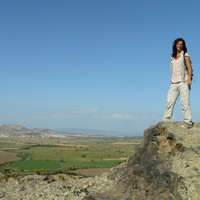





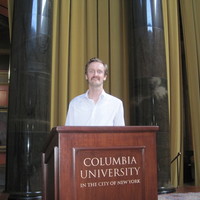

Uploads
Books by Christian Lauwers
Les monnaies de fouilles ne sont pas oubliées : elles viennent d’Apamée de Syrie (Chr. Lauwers et R. Margos) ou de Sagalassos (F. Stroobants).
C. Morrisson et F. de Callataÿ insistent finalement sur le caractère novateur des travaux d’Henri Pottier et leur enseignement pour les recherches à venir.
Unpublished masters' thesis in Art History and Archeology presented in June 2011 at the Université Libre de Bruxelles (ULB): "The importance of Syracuse in the sixth and fifth centuries BC gauged on the production and circulation of his coinage".
Papers by Christian Lauwers
summer 2010, that is to say the second largest sample of coins found in Apamea after the sample published by Jean-Pierre Callu in 1979. These coins are presented here in their archaeological context, a public building, the Tycheion, and the North-
East District, including a thermal establishment and a palaestra. Publishing those coins in their context should help precise the dating of some archaeological layers and, consequently, to specify periods of occupation of the buildings studied. The
issues raised by the presence of many backfills, halved and imitation coins are also discussed.
(2nd century BC - 5th century AD)
What is known about the monetary circulation and trade in Northern Gaul, from the period of Gallic Independence until the disappearance of the Roman Empire of the West? It appears that the use of coinage during trade, in commercial transactions, was a secondary function. Whether they were Gallic nobles or Roman emperors, usurpers or officials, the issuing
powers, that is to say the authorities who decided to strike and distribute currencies, were not
interested in trade and markets. They minted coinage only to pay their expenses. And these expenses
were always military first and foremost.The Gallic aristocrats sought to extend their power, and for this purpose they surrounded themselves with a numerous clientele of warriors and maintained alliances. It was for this purpose that they struck their heavy gold coins. The Roman emperors first struck money to pay for the legionaries, to build and maintain roads, harbours and fleets, enabling the legions to move rapidly from one border of the Empire to the other. But it was necessary that the recipients of the currencies could exchange it for the goods necessary for life: food, drinks, clothes, housing, heating... The circulation of coins could only lead to the monetisation of trade and, in the medium term, the establishment of structures allowing
such monetised exchanges, such as markets, and a division of labour between farmers, artisans and
merchants.
Je remercie François de Callataÿ qui une fois de plus, par ses judicieuses remarques, m'a évité de m'égarer dans ma quête de rigueur scientifique.
Les monnaies de fouilles ne sont pas oubliées : elles viennent d’Apamée de Syrie (Chr. Lauwers et R. Margos) ou de Sagalassos (F. Stroobants).
C. Morrisson et F. de Callataÿ insistent finalement sur le caractère novateur des travaux d’Henri Pottier et leur enseignement pour les recherches à venir.
Unpublished masters' thesis in Art History and Archeology presented in June 2011 at the Université Libre de Bruxelles (ULB): "The importance of Syracuse in the sixth and fifth centuries BC gauged on the production and circulation of his coinage".
summer 2010, that is to say the second largest sample of coins found in Apamea after the sample published by Jean-Pierre Callu in 1979. These coins are presented here in their archaeological context, a public building, the Tycheion, and the North-
East District, including a thermal establishment and a palaestra. Publishing those coins in their context should help precise the dating of some archaeological layers and, consequently, to specify periods of occupation of the buildings studied. The
issues raised by the presence of many backfills, halved and imitation coins are also discussed.
(2nd century BC - 5th century AD)
What is known about the monetary circulation and trade in Northern Gaul, from the period of Gallic Independence until the disappearance of the Roman Empire of the West? It appears that the use of coinage during trade, in commercial transactions, was a secondary function. Whether they were Gallic nobles or Roman emperors, usurpers or officials, the issuing
powers, that is to say the authorities who decided to strike and distribute currencies, were not
interested in trade and markets. They minted coinage only to pay their expenses. And these expenses
were always military first and foremost.The Gallic aristocrats sought to extend their power, and for this purpose they surrounded themselves with a numerous clientele of warriors and maintained alliances. It was for this purpose that they struck their heavy gold coins. The Roman emperors first struck money to pay for the legionaries, to build and maintain roads, harbours and fleets, enabling the legions to move rapidly from one border of the Empire to the other. But it was necessary that the recipients of the currencies could exchange it for the goods necessary for life: food, drinks, clothes, housing, heating... The circulation of coins could only lead to the monetisation of trade and, in the medium term, the establishment of structures allowing
such monetised exchanges, such as markets, and a division of labour between farmers, artisans and
merchants.
Je remercie François de Callataÿ qui une fois de plus, par ses judicieuses remarques, m'a évité de m'égarer dans ma quête de rigueur scientifique.
une monnaie en contexte peut être des tas de
choses : une offrande, une obole à Charon, une
indication chronologique, le témoin d’échanges
commerciaux ou du passage d’une armée, la
preuve de l’existence d’un dynaste inconnu par
ailleurs... Sans contexte, il ne faut que trente secondes
pour regarder le droit et le revers d’une
monnaie. Mais lorsque l’on prend conscience de
tout ce qu’une monnaie peut livrer d’Histoire,
lorsque l’on apprend à en détailler les représentations,
à en saisir le contexte tant archéologique
qu’historique, une monnaie ancienne n’est plus
un simple morceau de métal que l’on tient au
creux de la main, mais un fragment du passé, un
pont qui nous relie, à travers les âges, aux générations
disparues.